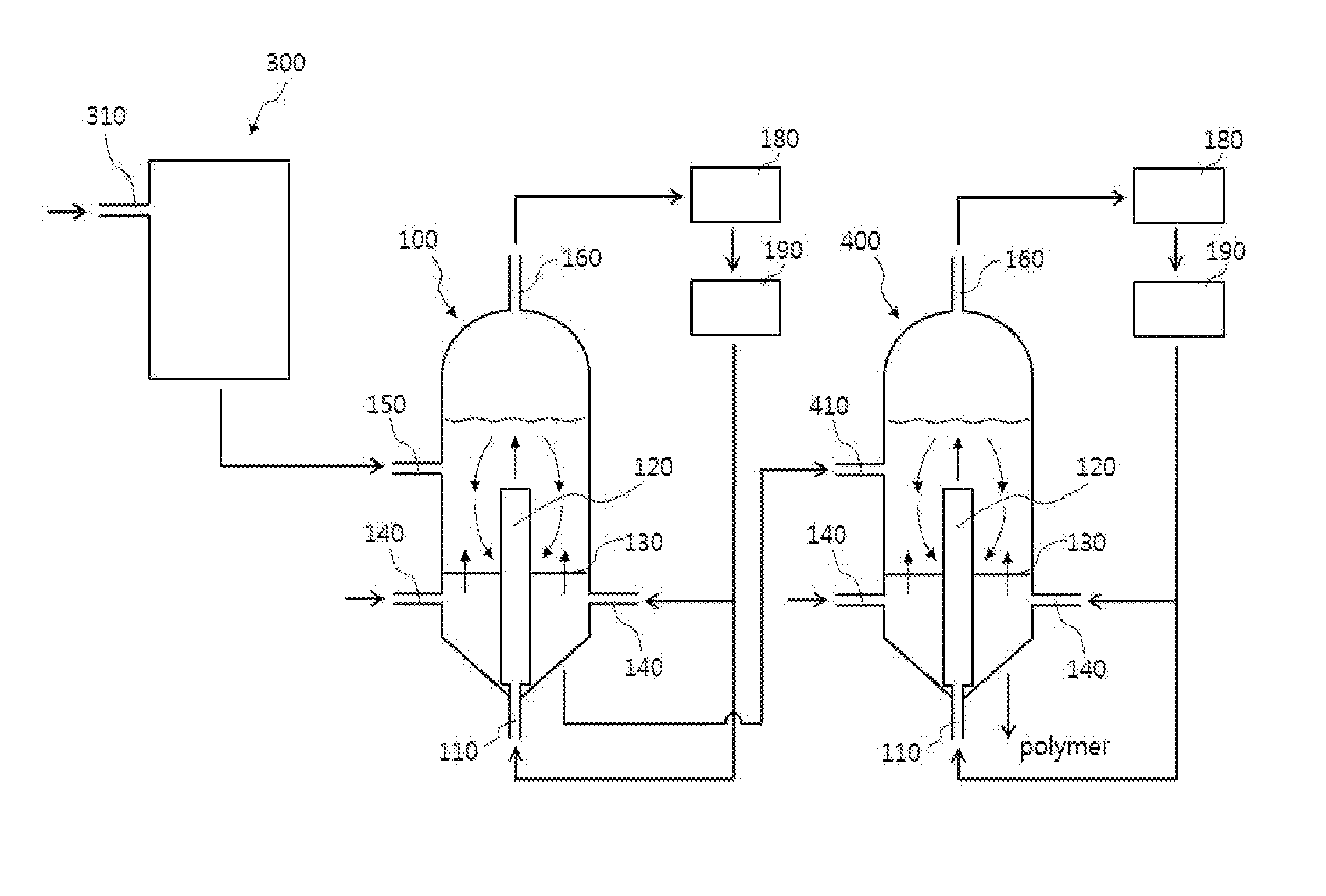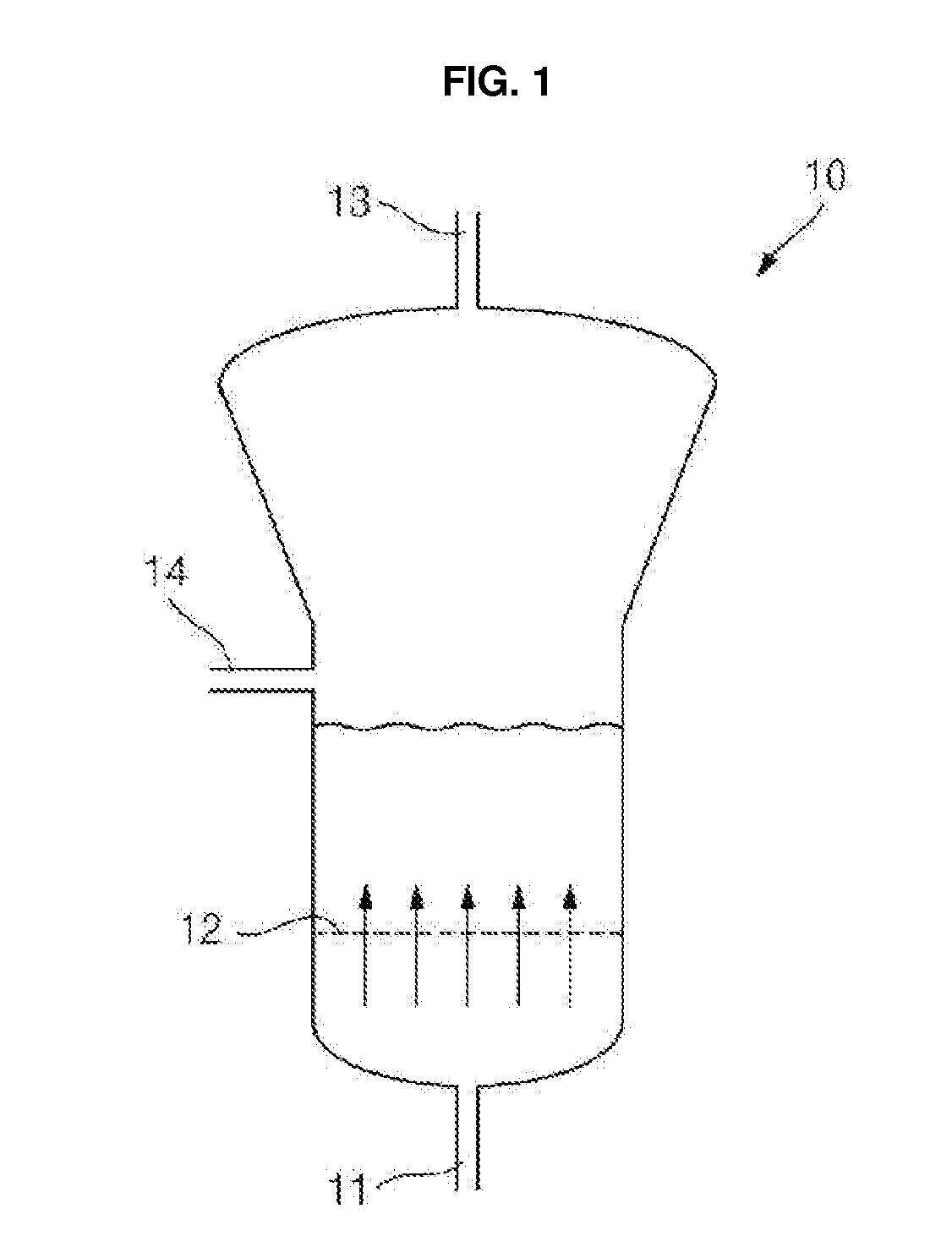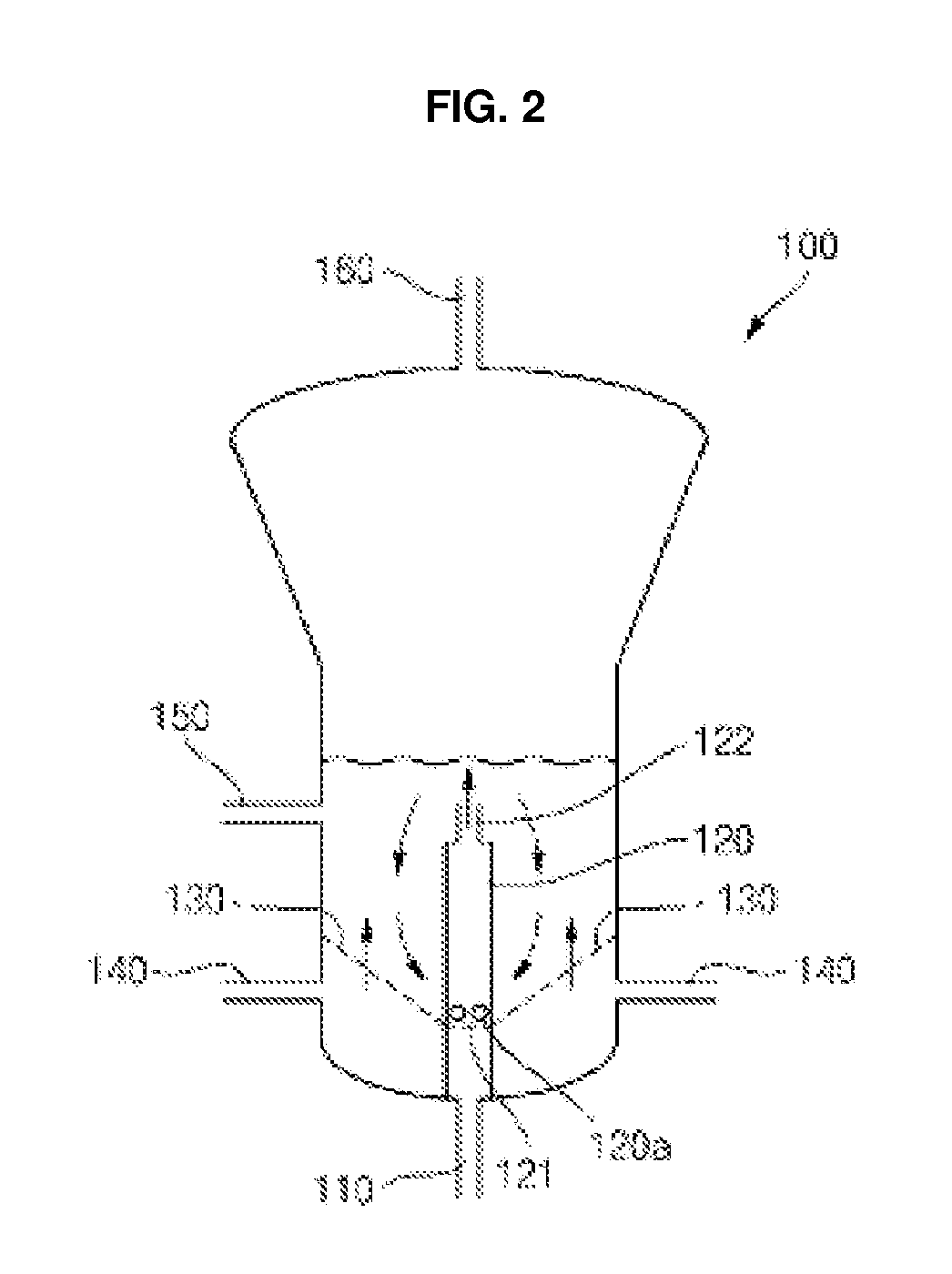Gas-Phase Polymerization Of Alpha-Olefin
a technology of alpha-olefin and gas phase, which is applied in the direction of furnaces, lighting and heating apparatus, chemical/physical/physicochemical processes, etc., can solve the problems of reducing the productivity per unit volume of the reactor, affecting the reaction condition, and limiting the contact frequency and contact time, so as to achieve easy formation of a slurry, reduce the solubility of pre-polymers, and high concentration
- Summary
- Abstract
- Description
- Claims
- Application Information
AI Technical Summary
Benefits of technology
Problems solved by technology
Method used
Image
Examples
examples 1 to 3
Gas-Phase Polymerization of Alpha-Olefin
[0054]Metallocene catalyst ((n-BuCp)2ZrCl2) supported on silica (Product name: ES70Y, company: INEOS silica), ethylene and 1-hexene as an alpha-olefin, and ethane and isobutane as a dispersive medium (inert gas) were supplied in the gas-phase polymerization reactor 100 shown in FIG. 2, to carry out gas-phase copolymerization of alpha-olefin. Wherein, the supply and stay time of the monomers were controlled to obtain desired polymerization yield (grams of polymer per grams of solid catalyst component), and the temperature of recycled gas was maintained lower than the dew point, and another reaction conditions were represented in following Table 1. During the reaction, gas mixture was partially condensed on the wall of the reactor to contribute to remove heat of reaction, and fouling problem of reactants was not occurred.
TABLE 1Example 1Example 2Example 3Dispersive mediumEthane / Ethane / Ethane / IsobutaneIsobutaneIsobutaneTemperature (° C.)807565Pre...
examples 4 to 6
Gas-Phase Polymerization of Alpha-Olefin
[0055]Gas-phase copolymerization of alpha-olefin was carried out by the same method as Examples 1 to 3 except for the usage of ethane as dispersion medium (inert gas) and the reaction conditions represented in following Table 2. During the reaction, gas mixture was partially condensed on the wall of the reactor to contribute to remove heat of reaction, and fouling problem of reactants was not occurred.
TABLE 2Example 4Example 5Example 6Dispersive mediumEthaneEthaneEthaneTemperature (° C.)807565Pressure (bar)252115Ethylene (mol %)201550Ethane (mol %)79.9984.8547Hydrogen (mol ppm)400605001-hexene (mol %)0.010.153Flow velocity of riser (m / s)44.25.5Flow velocity of annulus (m / s)0.70.80.9Specific productivity (kg / h · m3)507045Product density (kg / l)0.9450.9140.893Bulk density (kg / l)0.450.420.45
examples 7 to 9
Gas-Phase Polymerization of Alpha-Olefin
[0056]Metallocene catalyst ((n-BuCp)2ZrCl2) supported on silica (Product name: ES70Y, company: INEOS silica), ethylene and 1-hexene as an alpha-olefin, and liquid isobutane as a dispersive medium were supplied in the loop reactor as the pre-polymerization reactor 300 shown in FIG. 4, to carry out pre-polymerization of alpha-olefin, and then mixture of polyolefin pre-polymers polymerized in the pre-polymerization reactor 300 and catalyst, ethylene and 1-hexene as an alpha-olefin, and ethane and isobutane as a dispersive medium (inert gas) were supplied in the polymerization reactor 100 shown in FIG. 4, to carry out gas-phase copolymerization of alpha-olefin. Wherein, the supply and stay time of the monomers and pre-polymers were controlled to obtain desired polymerization yield (grams of polymer per grams of solid catalyst component), and the temperature of recycled gas was maintained lower than the dew point, and another reaction conditions we...
PUM
| Property | Measurement | Unit |
|---|---|---|
| pressure | aaaaa | aaaaa |
| partial pressures | aaaaa | aaaaa |
| angle | aaaaa | aaaaa |
Abstract
Description
Claims
Application Information
 Login to View More
Login to View More - R&D
- Intellectual Property
- Life Sciences
- Materials
- Tech Scout
- Unparalleled Data Quality
- Higher Quality Content
- 60% Fewer Hallucinations
Browse by: Latest US Patents, China's latest patents, Technical Efficacy Thesaurus, Application Domain, Technology Topic, Popular Technical Reports.
© 2025 PatSnap. All rights reserved.Legal|Privacy policy|Modern Slavery Act Transparency Statement|Sitemap|About US| Contact US: help@patsnap.com



